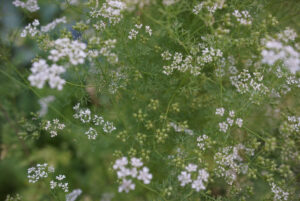
I. Introduction
Bird of Paradise plants, known for their striking foliage and vibrant blooms, are prized by gardeners for their ornamental value and tropical allure. However, like any plant, they are susceptible to various issues that can affect their health and appearance. One common concern among Bird of Paradise enthusiasts is the splitting and curling of leaves. In this article, we will delve into the causes of these leaf problems and explore effective solutions to restore the plant’s vitality and beauty.
II. Understanding Bird of Paradise Leaves
A. Anatomy of Bird of Paradise leaves
Bird of Paradise leaves are characterized by their large, paddle-shaped blades and prominent midribs. These robust leaves play a crucial role in photosynthesis, nutrient transport, and water regulation within the plant. However, they are also prone to various issues, including splitting, curling, and discoloration, which can impact overall plant health and aesthetics.
B. Causes of splitting and curling
The splitting and curling of Bird of Paradise leaves can be attributed to several factors, including environmental stressors, pests, diseases, and cultural practices. Understanding the underlying causes is essential for effectively addressing and preventing leaf issues, ensuring the long-term health and vitality of the plant.
III. Environmental Factors Contributing to Leaf Issues
A. Temperature and humidity fluctuations
Bird of Paradise plants thrive in warm, humid environments, reminiscent of their native habitats in tropical regions. However, sudden fluctuations in temperature and humidity levels can stress the plant, leading to leaf splitting and curling. It is essential to provide consistent environmental conditions and avoid drastic changes that can disrupt the plant’s equilibrium.
B. Sunlight exposure and intensity
While Bird of Paradise plants require ample sunlight to thrive, excessive exposure to direct sunlight can damage their leaves, causing them to split and curl. Sunburn is a common issue, particularly in plants grown in hot, arid climates or placed in south-facing windows. Providing partial shade or using protective coverings can help mitigate the effects of intense sunlight on Bird of Paradise leaves.
C. Watering practices and soil conditions
Proper watering practices are crucial for maintaining the health and vigor of Bird of Paradise leaves. Overwatering can lead to root rot and subsequent leaf issues, while underwatering can result in dehydration and wilting. Additionally, poor soil drainage and waterlogged conditions can suffocate the roots, impairing their ability to absorb water and nutrients, ultimately affecting leaf health and appearance.
IV. Pests and Diseases Affecting Bird of Paradise Leaves
A. Common pests
Bird of Paradise plants are susceptible to attack by various pests, including aphids, spider mites, scale insects, and mealybugs. These pests feed on the plant’s sap, causing damage to the leaves and stems. Signs of infestation may include yellowing, wilting, and curling of leaves, as well as the presence of sticky honeydew or sooty mold.
B. Leaf diseases
Fungal and bacterial diseases can also affect Bird of Paradise leaves, leading to discoloration, spotting, and curling. Common leaf diseases include leaf spot, powdery mildew, and bacterial blight. Proper sanitation, good air circulation, and fungicidal treatments can help prevent and control the spread of leaf diseases in Bird of Paradise plants.
C. Viral infections
Viral infections can cause deformities and abnormalities in Bird of Paradise leaves, including curling, distortion, and discoloration. These infections are often difficult to treat and may require the removal of infected plants to prevent further spread. Preventative measures, such as avoiding the use of contaminated tools and maintaining plant health, can help reduce the risk of viral infections in Bird of Paradise plants.
V. Cultural Practices to Promote Healthy Leaves
A. Pruning and grooming
Regular pruning and grooming are essential for maintaining the health and appearance of Bird of Paradise leaves. Remove dead, damaged, or diseased leaves promptly to prevent the spread of pests and diseases. Thinning overcrowded foliage and promoting air circulation can also help reduce the risk of leaf issues and improve overall plant health.
B. Fertilization and nutrient management
Proper fertilization is crucial for supplying Bird of Paradise plants with essential nutrients needed for healthy leaf growth and development. Select a balanced fertilizer specifically formulated for tropical plants and apply according to label instructions. Monitor soil nutrient levels regularly and adjust fertilization practices as needed to maintain optimal plant health.
C. Repotting and root care
Regular repotting and root care are essential for preventing root-bound conditions and maintaining soil health in Bird of Paradise plants. Assess the root system periodically and repot as needed to provide adequate space for root expansion. Refresh the soil with nutrient-rich compost or potting mix to replenish organic matter and promote healthy root growth. Proper soil drainage and aeration are essential for preventing waterlogged conditions and ensuring the long-term health of Bird of Paradise plants.
VI. Conclusion
In conclusion, addressing splitting and curling leaves in Bird of Paradise plants requires a comprehensive understanding of the underlying causes and effective management strategies. By providing optimal environmental conditions, practicing proper cultural care, and promptly addressing pest and disease issues, gardeners can promote healthy leaf growth and maintain the beauty and vitality of their Bird of Paradise plants. With diligence and proactive management, leaf problems can be effectively addressed, allowing Bird of Paradise plants to thrive and flourish in any environment.


